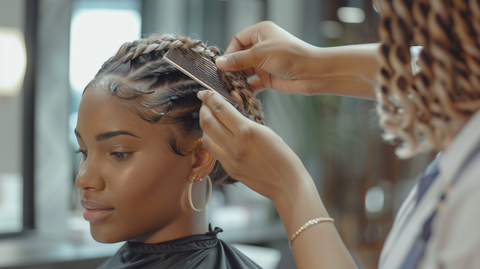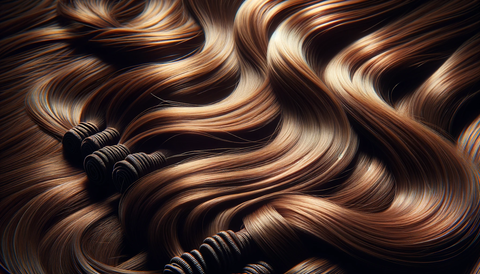Understanding the apprehensions and misconceptions surrounding hair extensions is crucial, especially when considering the investment involved. This discussion aims to elucidate the intricacies of choosing the right type of hair extensions, tailored to individual needs and preferences. A key question often asked is how much is hair extensions? and this article endeavors to offer a detailed and thorough response to the subject at hand.
The Intricacies of Hair Extension Pricing
Navigating the labyrinth of how much is hair extensions can be is daunting, with options ranging from budget-friendly synthetic varieties to premium, luxury extensions costing thousands. Several key factors influence this pricing spectrum, such as the hair's quality and origin, ethical sourcing considerations, and whether the extensions are made from human or synthetic material.
Optimal Choices Based on Usage

The intended use of hair extensions significantly dictates the appropriate choice. For transient, costume purposes, inexpensive synthetic options suffice. However, for those seeking a natural, enduring enhancement to their appearance, a mid-range, high-quality extension is advisable.
Remy and ProGrade Remy Human Hair: A Standard of Quality
For daily, seamless integration with natural hair, Remy or ProGrade Remy Human Hair extensions stand out. Their ethical sourcing and European texture compatibility make them a preferred choice.
Cost Analysis of Non-Permanent Extensions
Non-permanent extensions like The Halo Hair Extension and clip-ins, classified as 'DIY', range from $150 to $600. Their ease of self-application and removal make them a practical, lower-cost option when considering how much do extensions cost.
Permanent Extensions: A Professional Realm
Permanent extensions, requiring professional installation, span from $700 to over $2800. This category includes tape-ins, microbeads, weaves, and fusion extensions, each varying in price based on the application method and maintenance requirements. The question of how much do extensions cost in this segment gets answered by considering the longevity and quality of the extensions.
Recap: Understanding Extension Cost

This segment has explored the varying costs associated with different hair extension methods, focusing on the nuances of permanent and non-permanent types and the premium quality of Remy and ProGrade Remy hair.
Delving into Permanent Extension Costs
Permanent extensions, applied by professionals, vary in cost based on the method, salon charges, and maintenance frequency. Tape-in, fusion/keratin, weave-in, and microbead extensions each have distinct pricing structures, influenced by installation, adjustment, and maintenance intervals.
Tape-In Extensions: A Cost-Benefit Analysis
While initially economical, tape-in extensions can accrue significant costs over time, factoring in maintenance and hair replacement. The total annual expense can reach approximately $1800.
Fusion/Keratin Extensions: A Premium Choice
Fusion extensions, known for their seamless integration and minimal damage, are on the higher end of the pricing spectrum. With regular maintenance, the annual cost can be around $2825.
Weave-In Extensions: The Cost of Tradition
Weave-in extensions, while quicker to apply, can be uncomfortable initially and require regular maintenance. Their annual cost averages around $1750.
Microbead Extensions: Balancing Cost and Comfort
Microbead extensions offer a balance between durability and comfort but can lead to hair loss in some cases. The annual expense averages $2400.
Exploring Non-Permanent Extensions

Non-permanent extensions, such as clip-ins and halo hair extensions, offer the convenience of home application and lower overall costs. However, clip-ins can cause hair damage over time, leading to additional hair treatment expenses.
Halo Hair Extensions: The Ultimate Convenience
Halo hair extensions, renowned for their ease of use and natural appearance, are a cost-effective and low-maintenance option. With an annual cost around $375, they represent a long-term, hassle-free solution.
In summary, the selection of hair extensions hinges on personal usage intentions, quality preferences, and budget constraints. Whether choosing the immediate affordability of non-permanent extensions or investing in the lasting quality of permanent varieties, understanding these factors ensures a wise, satisfying investment in one's appearance.
Frequently Asked Questions
What factors determine the cost of hair extensions?
The price of hair extensions varies based on several factors, including the quality and origin of the hair, whether it's ethically sourced, and if it's made from human or synthetic materials. Premium, responsibly obtained human hair, such as Remy or ProGrade Remy, often comes at a higher price, yet delivers a more authentic appearance and texture.
How do I choose the right type of hair extensions for my needs?
The choice of hair extensions depends on your intended use. For temporary or costume purposes, synthetic extensions are sufficient. Consider mid-range to high-quality human hair extensions for a more natural and lasting appearance. Factors like hair texture, color, and lifestyle should also influence your decision.
What's the difference between non-permanent and permanent hair extensions?
Non-permanent extensions, such as clip-ins and halo extensions, can be easily applied and removed at home and are generally less expensive. Permanent extensions, like tape-ins, microbeads, weaves, and fusion extensions, require professional installation and maintenance, making them more costly but also more durable and integrated with your natural hair.
What are the costs associated with permanent hair extensions?
Permanent hair extensions typically range from $700 to over $2800, depending on the type (tape-ins, microbeads, weaves, fusion) and professional installation and maintenance costs. For example, tape-in extensions cost around $1800 annually, while fusion extensions can reach about $2825 per year.
Are there any risks or downsides to using hair extensions?
While hair extensions offer the benefit of enhancing your appearance, there are potential downsides. Permanent extensions can lead to hair loss if not properly maintained, and even non-permanent clip-ins can cause damage to your natural hair over time. Following proper maintenance and choosing the type that best suits your hair's health and condition is important.
